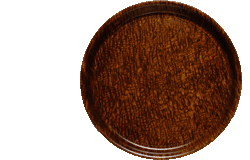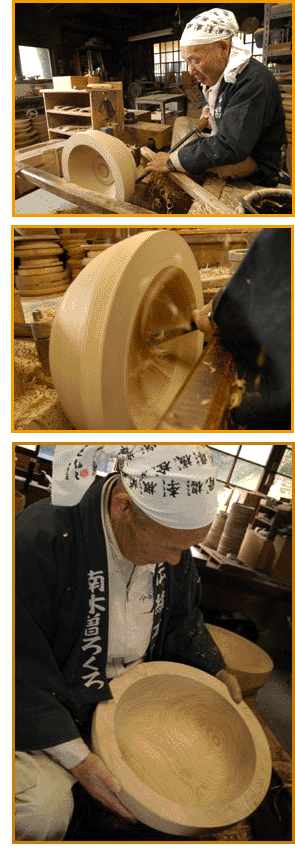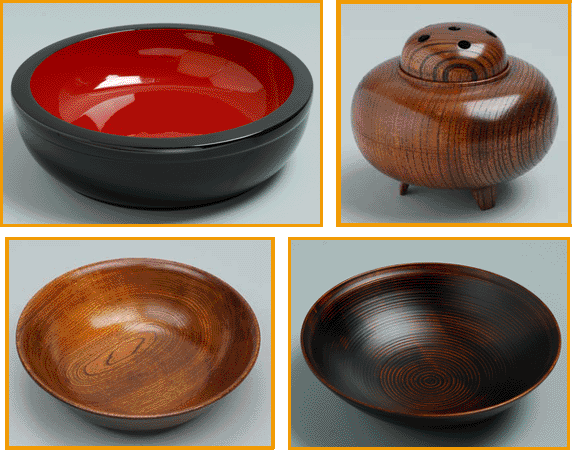|
|
Lacquerware |

Living with Tree
Some things just must be made by hand, and some things just must be made of wood.
Some things are not perfect when they are finished; they become perfect as they are lovingly used.

In the Ogura clan, we have been wood grain artisans for centuries, walking the mountains seeking the perfect materials for our art, and today as well we live day by day with and for trees. The Japanese adage "Learn from the past to make progress today" reflects our philosophy well, as we treasure the teachings from our ancestors while striving to create products that suit modern lifestyles. Thinking first and foremost of the people who will buy and use our goods, we Oguras continue our daily lives with and for trees. Ogura Eichii
 Today our modern lifestyle is constantly changing and evolving. Maybe the pace is just too fast, changing faster than mankind can adapt.
Today our modern lifestyle is constantly changing and evolving. Maybe the pace is just too fast, changing faster than mankind can adapt.
Working with wood and working with lacquer demand a focus and awareness completely divorced from this rapid pace of social change. When you take a piece of wood in your hands and inspect it, you have to be aware that each piece shows its own distinctive wood grain, and that the grain can shift and flow with every touch of the plane's blade. Here, the wisdom handed down from the past fully applies in our search for the most beautiful form the wood grain can present.
We are glad that this is our job. We're glad our job lets us live together with nature, and together with trees as part of nature's own flow, . . . . . .
Living at a truly human pace.
The History of Wood Grain Artistry
The profession of wood grain artisan, who uses a special wood turning tool called the rokuro to form carved-out round pieces of wood grain art such as bowls and trays, stretches back more than a thousand years. Around 859, Prince Koretaka (844-897), the eldest son of Emperor
Buntoku (827-858), was living in Ogura Village, now part of Shiga Prefecture roughly in the center of the main island Honshu. It's said that there, Prince Koretaka developed the technique of using the rokuro to make wood grain products. He in turn assigned this technique to two of his family retainers, Ogura Sanehide and Okura Korenaka, and set them to creating works of wood grain art, in the process creating the wood grain artisan's profession.
Originally these wood grain artisans served the needs of the royal household, and later they were given special dispensation to travel freely throughout Japan's many feudal kingdoms, seeking their special materials and practicing their profession. Later, during the late 19th century when Japan was opening to the modern world and the feudal kingdoms were replaced by centrally governed prefectures, clarification of the ownership of mountain forests and development of the transportation system made it simpler to obtain their materials and put an end to the roving of the wood grain artisans. Today, the sole town formed by traditional rokuro artisans who are descendants of the original Ogura and Okura families is Shinshu Urushibata in Nagano Prefecture.
Living with Trees
In a life of over 50 years with trees, Ogura Eichi once followed his father into the mountains to stand before a towering tree that, at long last, was about to fall to the axe. Before making the first cut, my father gazed up, past the highest branches, to see the blue sky between the leaves. Immediately after felling the tree, he placed a small offering of bamboo grass on the stump and folded his hands in reverence. Ever since, I've tried to bring the same reverence and a determination to use it well to every piece of wood I carve.
Ogura Eichii
WOOD CRAFTS YAMATO STUDIO
